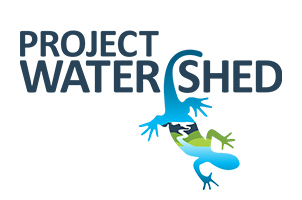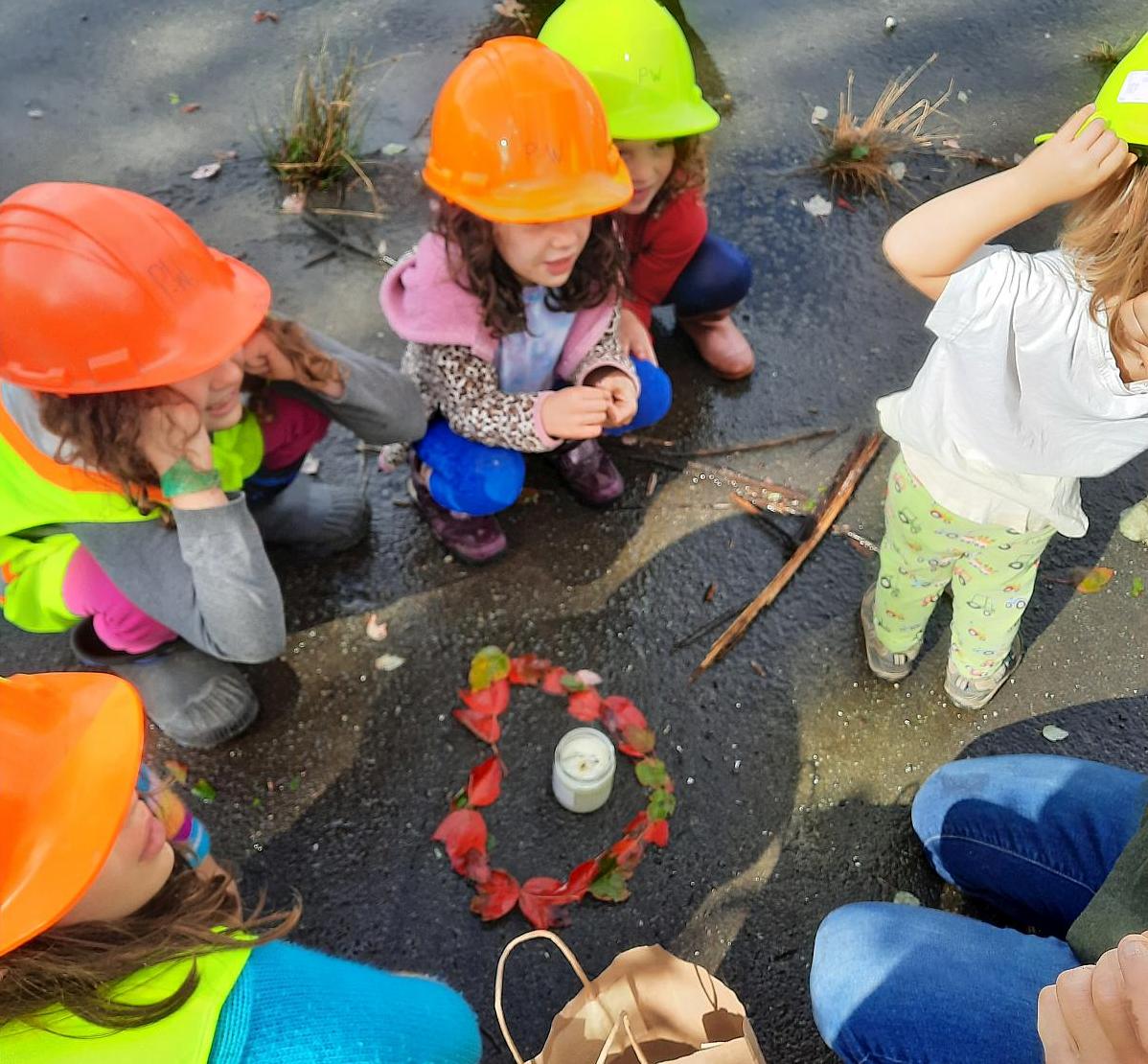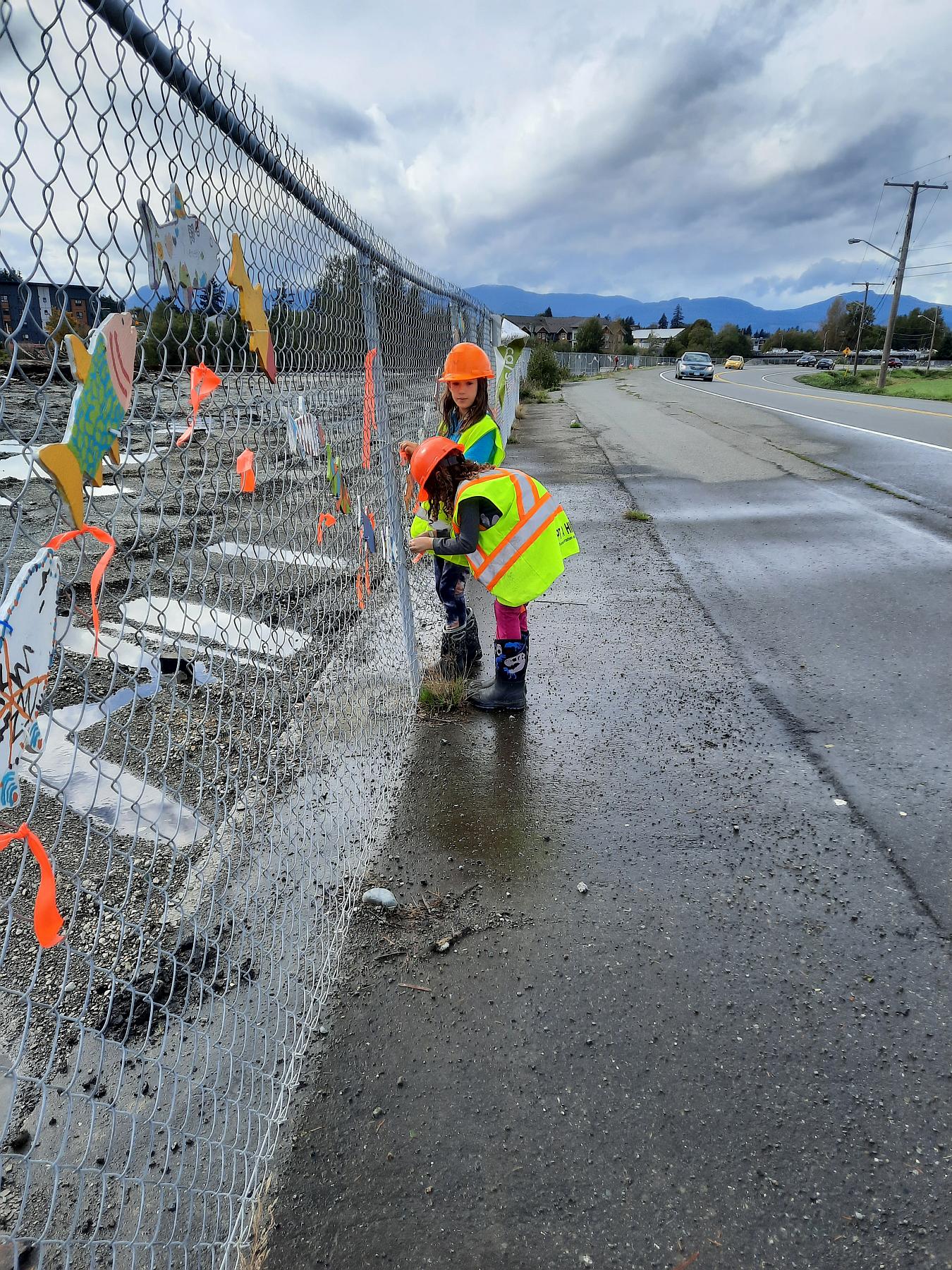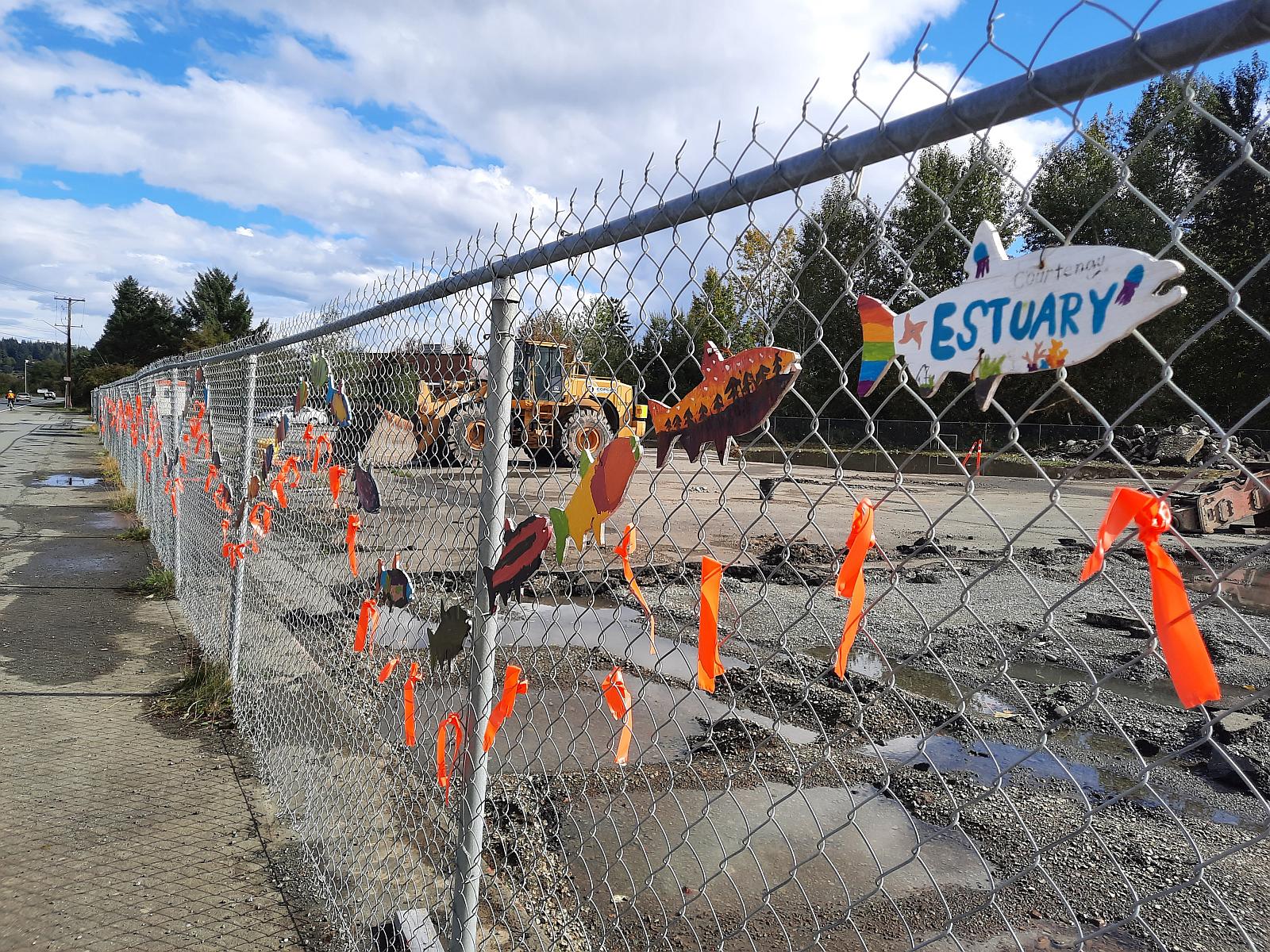Project Watershed reflects on Truth and Reconciliation
Reflecting and learning at Kus-kus-sum ~ C. Holbrook
Hanging orange ribbon on the fence ~ C. Holbrook
We at Project Watershed took the first National Truth & Reconciliation Day, to reflect on our role, as a stewardship organization within the landscape of the Comox Valley, the traditional and unceded territory of our partners, the K’ómoks First Nation. We used this day for a chance to contemplate how we can be better partners and allies to all Indigenous communities and Peoples in Canada.
As we work to understand our role, we would like to encourage others, to learn and unlearn, to recognize the truth of Indigenous communities throughout this country, and to contribute in whatever capacity you can towards reconciliatory action. We understand this looks different for everyone. We are all unique, like the stories of how we came to live in this place.
There are numerous resources, created by Indigenous people, with the intent to educate and inform nations, communities, and individuals about crucial issues for Indigenous communities. We’ve included a handful below, recognizing that there are endless Indigenous-created resources that can inform our growth.
Reconciliation, rather than being an endpoint, is the constant state of action and application, of recognizing past and current injustices, honouring lost children and survivors and working towards a just and equitable future. As we all know, this is not simple work, it is not easy work, but it is necessary work. We can raise up our Indigenous communities, celebrate and learn from their leadership, and support a world that lays the foundation for thriving Indigenous communities for generations to come.
We stay committed to learning and unlearning, recognizing the importance of Indigenous Nations and communities in the preservation and stewardship of our landscapes, and we continue to dedicate ourselves towards reconciliation with our work and projects. G̱ilakas’la (thank you) to all those who continue to support this work and who continue to work to understanding our role within a Truth and Reconciliation framework.
Reclaiming Power and Place
The Final Report of the National Inquiry into Missing and Murdered Indigenous Women and Girls
Related Posts
Mallard Creek Restoration Update for 2024
Restoration work in Mallard Creek will continue this year, including invasive removal, restoring connectivity, and trial planting of a new riparian species. Volunteer events starting in September 2024.
Volunteer at Kus-kus-sum Chamber of Commerce Event
We are showing Kus-kus-sum off to businesses in the Valley through a Chamber Business to Business event. We are looking for a few volunteers to assist with this event.
Coastal Plant Monitoring
Get involved with our new vegetation community science monitoring program!
Spring Field Trips
Throughout May and June Project Watershed will be taking elementary school classes out on field trips to learn about estuary and coastal ecology and to assist with planting and plant maintenance.
Working Together to Identify Forage Fish Spawning Beaches
This year marks the 5th year of a partnership between Comox Valley Project Watershed Society and North Island College on a long-term study to examine intertidal spawning habitats of forage fish in the northern Salish Sea.
Glen Urquhart Update – Spring 2024
Latest news from Glen Urquhart restoration progress for spring 2024.




